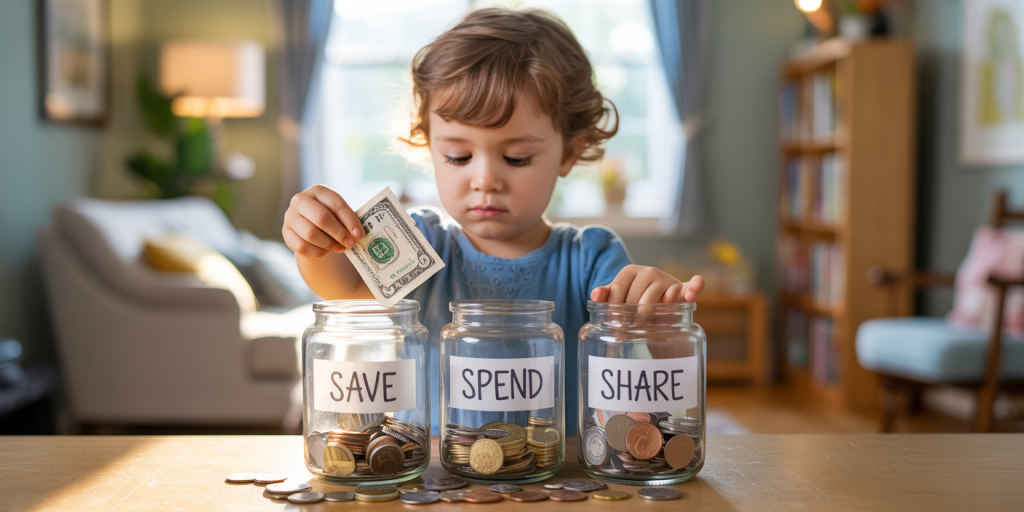Understanding personal finance is an essential life skill that young people need to develop early. The earlier children and teenagers grasp financial concepts, the better equipped they are to manage money responsibly and avoid financial pitfalls as adults. However, teaching personal finance to kids and teens requires a tailored approach that aligns with their developmental stages and interests. This article explores effective strategies for educating young individuals about money management, practical examples, relevant data, and looks ahead to future trends in financial education.

Setting the Stage: Why Financial Literacy Matters for Kids and Teens
Financial literacy is increasingly recognized as a critical competency for children and adolescents. According to a 2022 survey by the National Financial Educators Council, 64% of teens reported feeling unprepared to manage their finances once they leave home. This lack of preparation has significant consequences. The Financial Industry Regulatory Authority (FINRA) reports that young adults with poor financial literacy are more likely to accumulate debt, with the average U.S. credit card debt for individuals aged 18-29 nearly $3,000 in 2023.
Instilling money management skills early helps develop habits like budgeting, saving, responsible spending, and investing. Moreover, financial education reduces the likelihood of impulsive financial decisions and equips youth to navigate complex economic environments. Parents, educators, and policymakers are increasingly focusing on integrated approaches to foster these skills within and outside formal schooling environments.
Creating a Foundation: Introducing Basic Financial Concepts to Children
When teaching kids about money, simplicity and relatability are key. Young children understand concrete ideas better, so breaking financial concepts into manageable pieces is essential. Start by introducing the idea of money as a means to purchase goods and distinguish needs from wants.
For instance, parents can use everyday shopping scenarios to explain budgeting. Giving children a fixed amount of money to spend during grocery shopping and letting them choose items within that budget can be both educational and engaging. This practical exercise demonstrates that money is finite, and choices have consequences.
Another practical example is the “jar system,” which involves dividing allowance or earned money into jars for saving, spending, and sharing. This method, popularized by financial experts like Dave Ramsey, visually reinforces the importance of allocating money for different purposes. Tables comparing how $10 could be split in various ways based on priorities can deepen understanding:
| Allocation Method | Save ($) | Spend ($) | Share ($) |
|---|---|---|---|
| Equal Split | 3.33 | 3.33 | 3.33 |
| Save Half, Spend Quarter | 5.00 | 2.50 | 2.50 |
| Spend Half, Save Quarter | 2.50 | 5.00 | 2.50 |
Such simple models help children grasp financial planning basics early on.
Engaging Teens with Interactive Tools and Real-Life Applications
Teenagers are more capable of abstract thinking and can handle more complex financial topics such as credit, interest rates, and investments. To keep teens engaged, interactive tools and simulations work well. For example, online budgeting apps designed for teens, like “Mint Teen” or “Greenlight,” enable them to track expenses, set goals, and practice financial decision-making with virtual or real money guided by parental oversight.

Incorporating real-life contexts is vital. Encourage teens to participate in managing family expenses, such as contributing to utility bills or planning a vacation budget. This experiential learning solidifies theoretical knowledge and highlights the consequences of financial choices.
Another effective technique is using case studies. For instance, discuss the impact of credit card debt by referencing national data. According to Experian’s 2023 Consumer Credit Review, the average credit card interest rate is just over 20%. Show teens how failing to pay off a $1,000 balance can result in hundreds of dollars in interest paid alone. This puts abstract percentages into perspective.

A comparative table illustrating the cost of minimum payments versus full payments on credit cards can clarify the importance of responsible borrowing:
| Payment Type | Monthly Payment | Interest Paid Over 1 Year | Total Paid |
|---|---|---|---|
| Minimum Payment Only | $25 | $220 | $1,280 |
| Full Payment Monthly | $90 | $0 | $1,000 |
Practical examples like this demonstrate the long-term benefits of timely payments and debt management.
Encouraging Saving and Investing Early
Saving is a fundamental tenet of personal finance, and teaching kids and teens to save regularly builds a habit that lasts a lifetime. Encourage setting savings goals, whether short-term (buying a video game) or long-term (college tuition). Visual tools like savings charts or goal trackers can motivate young savers by showing measurable progress.
Introducing teens to investing deepens financial literacy significantly. While investing may seem complex, starting basic education around stocks, bonds, and compound interest can demystify the topic. For example, explain using the story of “The Latte Factor,” popularized by author David Bach, which illustrates how small daily savings can grow over time through investment.
Use compound interest calculators to show how $100 saved monthly at a 7% annual return can grow to over $20,000 in 10 years. Presenting this in a table format enhances comprehension:
| Monthly Savings | Interest Rate | Years | Total Amount Saved |
|---|---|---|---|
| $100 | 7% | 5 | $6,989 |
| $100 | 7% | 10 | $20,144 |
| $100 | 7% | 15 | $38,349 |
This empowers teens to see the value of early investing, encouraging patience and discipline.
Teaching Responsible Spending and Consumer Awareness
Besides saving and investing, teaching kids and teens about responsible spending is crucial. Discuss the influence of advertising, peer pressure, and impulse buying. Role-playing exercises where teens decide whether to buy certain items after evaluating necessity and comparing prices cultivate critical thinking.
Understanding consumer rights and identifying scams also need coverage. For example, explaining online fraud, identity theft, and safe online shopping practices can protect youths in an increasingly digital economy.
Use comparative examples to illustrate how different brands or retailers price similar products. For example, compare the costs of a popular sneaker model at various stores or online platforms. Having teens research and analyze which option offers the best value teaches them to seek quality and price balance.
| Retailer | Price | Shipping Fee | Return Policy | Final Cost |
|---|---|---|---|---|
| Store A | $80 | $5 | 30-day free return | $85 |
| Online Platform B | $75 | $10 | 15-day return | $85 |
| Secondhand Seller | $50 | $5 | No return | $55 |
This example encourages a nuanced evaluation of purchases beyond just the sticker price.
The Role of Schools and Technology in Future Financial Education
Looking ahead, schools will play a progressively crucial role in providing systematic financial education. Many states in the U.S. have started mandating personal finance courses at the high school level. These curricula are evolving to include practical applications like tax filing, retirement planning, and credit score understanding.
Technology will further enhance accessibility and engagement. Gamified apps and virtual reality simulations can provide immersive financial decision-making experiences. For instance, platforms like “Savvy Money” use scenario-based learning to prepare students for real-life financial dilemmas.
Additionally, artificial intelligence and machine learning can offer personalized financial coaching tailored to teens’ unique circumstances and learning paces. This customization improves retention and empowers youth to build confidence with money management.
With growing awareness of financial inequalities, future initiatives could target underserved communities to democratize financial literacy. Combining community programs, school curricula, and digital innovation can make personal finance a fundamental skill accessible to all.
In summary, teaching kids and teens about personal finance requires a multifaceted approach grounded in age-appropriate methods and real-world application. By introducing foundational concepts early, leveraging interactive tools, encouraging saving and investing, promoting responsible spending, and harnessing technology and educational reforms, we can equip the next generation with the skills needed for financial independence and security. The investment made today in financial education will yield lifelong dividends for individuals and society alike.

Deixe um comentário